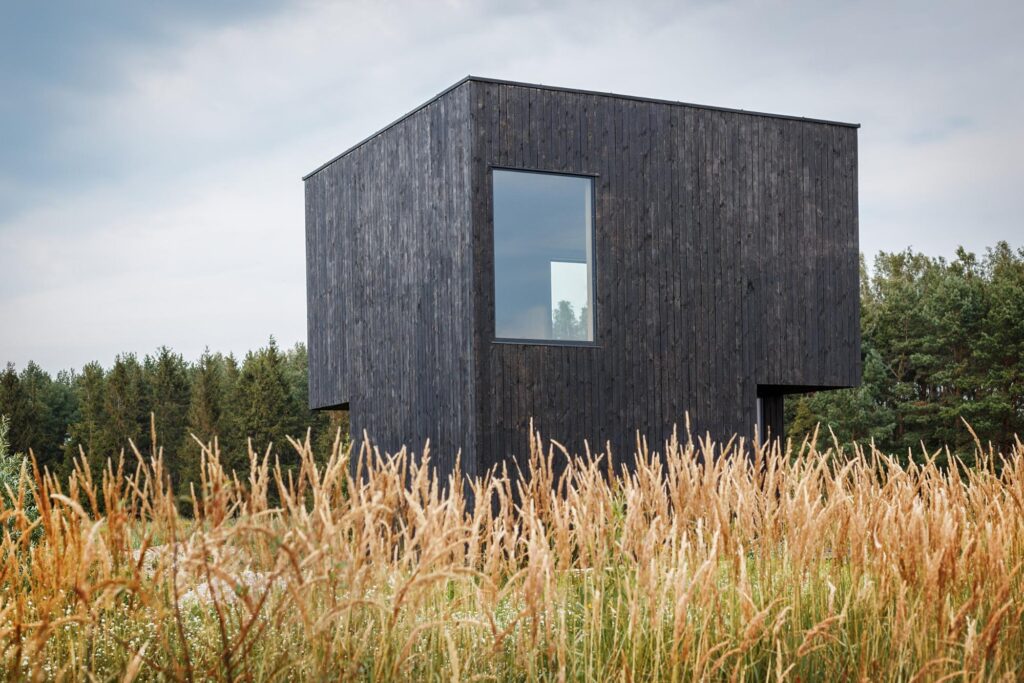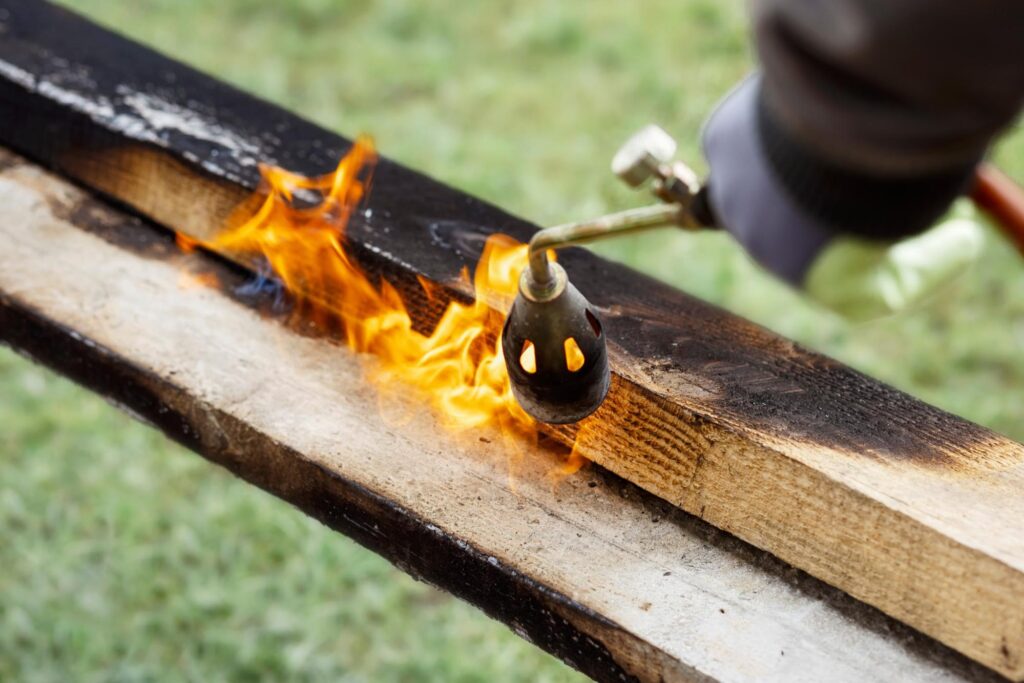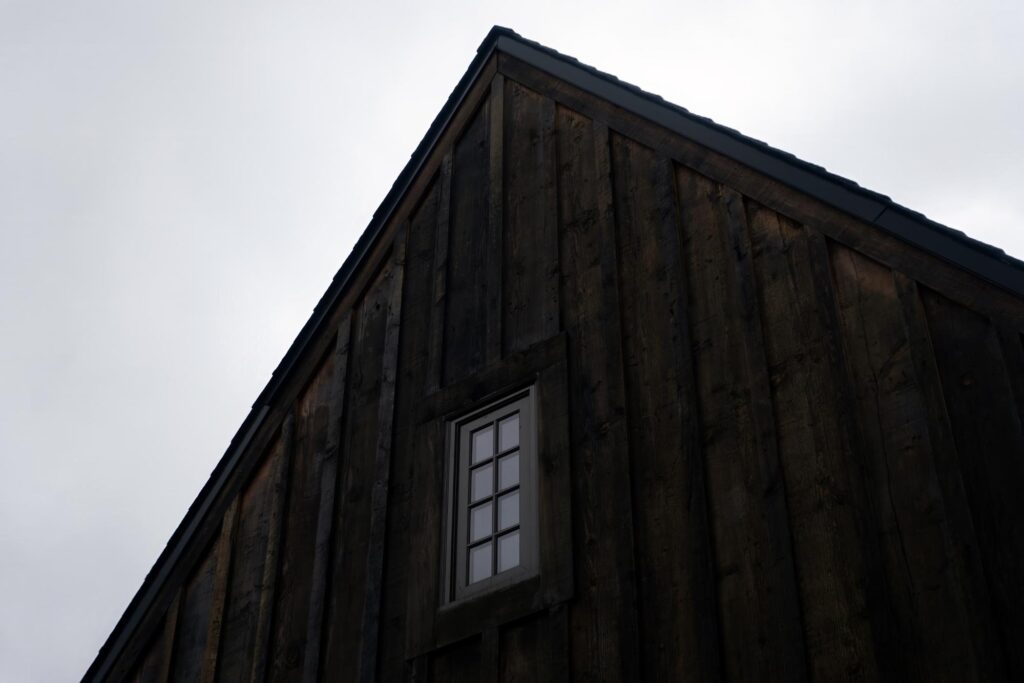Table of Contents
Shou sugi ban is a centuries-old art form that combines fire and craftsmanship to create something truly extraordinary. This traditional Japanese method involves charring wood to enhance its durability, resist pests, and bring out its unique textures. Over time, it has evolved into a versatile design choice, appearing in everything from sleek modern homes to rustic interiors.
In this article, you’ll discover the many benefits of shou sugi ban, its wide range of applications for both exterior and interior spaces, and how it’s even used in creative ways like decor and art. We’ll also guide you through the step-by-step process that brings this timeless technique to life.
What Is Shou Sugi Ban?
Shou sugi ban, also known as yakisugi, is a traditional Japanese technique for preserving wood by charring its surface. Craftspeople typically use cedar or cypress for this process, as their dense grains withstand heat well.
The charring creates a carbonized layer, making the wood highly resistant to fire, pests, rot, and weathering. After burning, artisans brush away soot, leaving a textured, strikingly black surface that can be sealed for extra durability.
Historically, shou sugi ban emerged in 18th-century Japan, where it was used to protect siding on rural homes and temples. The process offered a natural and sustainable way to extend the lifespan of materials without chemicals.
Today, shou sugi ban wood has found global appeal for its beauty and resilience. Architects often incorporate shou sugi ban siding in modern and rustic designs, lending homes an elegant, weatherproof finish. From shou sugi ban houses in Japan to luxury builds worldwide, the method remains timeless and innovative.
What Are the Benefits of Shou Sugi Ban?
Shou sugi ban offers a range of benefits that make it an attractive choice for homeowners and builders. This ancient technique combines practicality and beauty, providing a solution that enhances durability, reduces maintenance, and supports sustainable home designs. Here’s a closer look at why shou sugi ban remains a popular option:
- Durability: The charring process creates a carbonized layer that strengthens the wood, making it resistant to weather, rot, and pests. This durability ensures your wood siding or furniture lasts for decades.
- Low maintenance: Unlike untreated wood, shou sugi ban wood requires little upkeep. The natural preservation eliminates the need for chemical treatments, saving time and resources over the years.
- Aesthetic appeal: Shou sugi ban delivers a one-of-a-kind visual impact with its deep, textured surface and rich black tones. It’s a versatile choice that enhances both modern and rustic designs.
- Eco-friendliness: This traditional method uses fire instead of synthetic chemicals, making it a sustainable and environmentally friendly process that aligns with natural preservation techniques.
Applications of Shou Sugi Ban

Whether you’re building a shou sugi ban house or adding unique design elements, this timeless technique offers endless possibilities. From exterior applications like shou sugi ban siding to creative interior and artistic uses, it’s a powerful way to bring texture and character to your projects.
Exterior uses
Shou sugi ban is a versatile choice for enhancing your home’s exterior and outdoor spaces. Its durability and unique appearance make it an excellent option for siding, fences, decks, and even door and window framing. As siding, shou sugi ban offers a striking, weather-resistant finish that pairs beautifully with modern materials like ceramic exterior wall panels, creating a harmonious blend of textures.
The charred surface of fences and decks resists pests, rot, and harsh weather, ensuring they stay sturdy and attractive over time. Door and window frames crafted with shou sugi ban add a distinct, rustic-meets-modern touch that elevates your home’s character.
Interior uses
Shou sugi ban also brings warmth and character to interior spaces. You can use shou sugi ban wood for accent walls to create a dramatic focal point in living rooms or bedrooms. Its rich texture and dark tones pair beautifully with neutral or minimalist decor.
Cabinets and furniture crafted with this method offer a stunning, one-of-a-kind look while remaining durable and low-maintenance. For something truly unique, consider wall or ceiling cladding to add an element of natural sophistication.
Shou sugi ban wood also blends seamlessly with both rustic and contemporary styles, offering endless possibilities. Its striking aesthetics, combined with its practical benefits, make it a versatile choice for transforming your interior into something truly unforgettable.
Creative applications
Shou sugi ban also offers creative possibilities. Its distinct charred texture and deep tones make it perfect for crafting unique art installations. Decor items like picture frames, mirrors, and even planters take on a bold, modern feel when made with shou sugi ban wood.
You can also explore shou sugi ban in jewelry design, where its dramatic look creates striking pendants, earrings, and bracelets. Lighting fixtures, like pendant lights or lamp bases, take on a whole new dimension with the textured finish, adding intrigue and depth to your space.
Whether you’re accessorizing your shou sugi ban house or adding small touches to your decor, these creative uses bring a touch of sophistication and individuality. Its ability to transform everyday objects into conversation pieces makes it a favorite for artistic and design-focused projects.
The Shou Sugi Ban Process

The shou sugi ban process transforms wood into a durable, visually striking material using fire and care. Each step requires attention and precision to create the signature charred finish that makes this technique so unique. Here’s how it works:
- Burning the wood: Start by carefully charring the wood in a controlled, well-ventilated area. Use a torch or flame to burn the surface evenly, creating a carbonized layer that enhances durability and adds texture. Always follow safety precautions to manage the heat and prevent accidents.
- Cooling and cleaning: Allow the wood to cool completely before handling it. Once cool, use a stiff brush to remove loose ash and soot, revealing the rich patterns and textures beneath the charred surface.
Staining and preserving: After cleaning, you can enhance the wood’s appearance with a stain or simply apply a finish to seal and protect it. This final step locks in the durability and gives the wood its polished look.
Wrapping Up: The Beauty of Shou Sugi Ban
Shou sugi ban is a blend of artistry, tradition, and functionality that has stood the test of time. From its origins in Japan to its modern uses worldwide, this charred wood method enhances homes with durability, sustainability, and undeniable charm. Whether you use it for siding, interior accents, or creative decor, shou sugi ban transforms ordinary wood into a timeless design statement.
SHAWOOD embraces these Japanese design principles, blending innovation with heritage to create homes that honor tradition while meeting modern needs. The attention to detail and harmony with nature mirrors the philosophy behind shou sugi ban, crafting spaces that feel both beautiful and balanced.
If you’re drawn to designs that tell a story and reflect true craftsmanship, shou sugi ban and SHAWOOD offer inspiration for creating a home that’s as timeless as it is unique.
Frequently Asked Questions

How do you care for shou sugi ban?
Proper maintenance keeps your shou sugi ban looking its best while allowing it to age gracefully. Clean the surface occasionally using a soft brush or cloth to remove dust and debris. Apply a quality sealant or protective coating as needed to preserve its finish and protect it from the elements. Over time, shou sugi ban develops a natural patina that enhances its unique character, adding depth to its appearance.

What kind of wood is used for shou sugi ban?
Shou sugi ban works best with certain types of wood that handle the charring process well. Cedar and cypress are traditional favorites due to their natural resistance to rot and pests, making them ideal for outdoor applications. You can also use hardwoods like ash, oak, and maple for a denser, more textured finish, perfect for furniture or interior accents. Pine is another option, offering a softer, more rustic look. The key is choosing wood that suits your project while responding well to heat.

How often do you need to reapply sealant to shou sugi ban?
For exterior shou sugi ban surfaces, resealing is usually needed every 5-10 years, depending on factors like weather and sun exposure. If your area experiences heavy rain or intense sunlight, you may need to reapply sealant sooner to keep the wood protected. On the other hand, indoor applications require much less frequent maintenance since they aren’t exposed to the elements. Regularly check the finish to ensure it remains intact, and reapply sealant when you notice signs of wear.






Shou sugi ban is a traditional Japanese technique that uses controlled charring to create a durable, eco-friendly, and visually striking wood finish, ideal for exterior, interior, and creative applications.